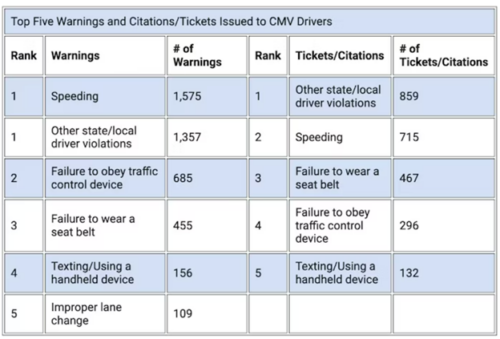During Operation Safe Driver Week, the Commercial Motor Vehicle Safety Alliance aimed to promote safe driving and increase awareness of traffic enforcement for both car and truck drivers; however, commercial vehicle drivers were found to be the main recipients of warnings and tickets during this initiative.
In Canada and the U.S., law enforcement officers conducted 11,448 traffic stops during the week, targeting both commercial motor vehicle drivers and passenger vehicle drivers engaging in unsafe behavior.
The officers issued a total of 4,494 tickets and 5,756 warnings to drivers of both types of vehicles. Specifically, commercial motor vehicle drivers received 2,634 tickets and 4,592 warnings, while passenger vehicle drivers received 1,860 tickets and 1,164 warnings.
One of the major violations identified during Operation Safe Driver Week was speeding, the primary focus of this year’s campaign. Truck drivers received the most warnings for this offense, and it was also the second most common reason for issuing tickets.
A total of 2,219 warnings and 2,024 citations were issued for speeding. Commercial motor vehicle drivers received 1,594 warnings and 731 tickets for speeding, while passenger vehicle drivers received 625 warnings and 1,293 citations.

Additionally, drivers were also warned or ticketed for “other state/local driver violations,” which accounted for the most tickets among commercial motor vehicle drivers and the second most among passenger vehicle drivers. These violations encompass issues like lack of registration certificate, no proof of insurance, size and weight violations, and defective equipment. Often, officers uncover these violations when pulling drivers over for another offense.
Failure to wear a seatbelt was another common unsafe behavior. A total of 512 warnings and 553 tickets were issued for this violation. Commercial vehicle drivers received 455 warnings and 467 tickets for not wearing their seatbelt.
Commercial motor vehicle drivers also received 156 warnings and 132 tickets for texting or using a handheld device while operating their vehicles.
Source: CCJ Digital
Chart: CVSA











